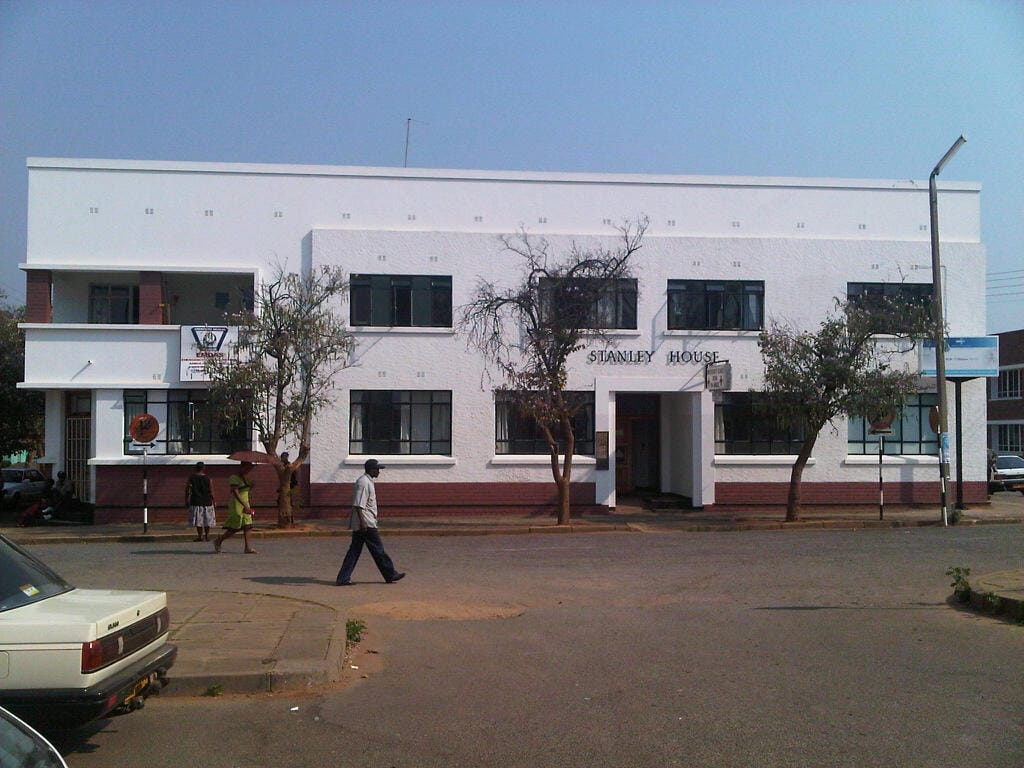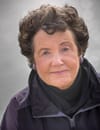The Blood Transfusion Service

Stanley House on 4th Street, was designed to house Dad’s private practice and a dental office downstairs with flats above which were lated converted to a day theatre as services expanded to five partners to serve Que Que’s growing population. It’s still standing today. Photo taken 2010, by Bob Atkinson, of Pretoria, South Africa.
Tales from the Blood Transfusion Service in Que Que
When Dad first interviewed at the Globe and Phoenix Mine in January 1946 he saw there was lots of room for improvement. One was the introduction of a blood transfusion service. So when he arrived in May of that year to take up the appointment he brought with him the white ceramic tiles and antisera to do simple blood grouping and cross matching. He set up an emergency roster at the hospital for an on demand blood transfusion service.
Conflict with the Globe and Pheonix Mine management and its medical benefit society made Dad realize he would have to set up private practice to enjoy full control and do things his way. So early on he built Stanley House on 4th Avenue with consulting rooms on the ground floor and flats above, with a view to later expansion upstairs as the practice grew. Dr. Adlington was the first of the English partners to join him in 1947 and soon after Dr. Ward in 1948. Drs. Brown and then Pirie followed in the early 50’s. The staff grew too to support the growing practice. An in-house blood bank was established.
Tales from the Blood Transfusion Service in Que Que
Elaine Tyzack started work at Stanley House. Dora Candy was in the office and Doreen Matthews was the SRN. Doreen always wore a veil, claiming that she had worked for it when she did her SRN and therefore would wear it! Doreen and Elaine became firm friends.
It was Doreen who introduced the Stanley House resident ghost. Tickley, as he was known, was a patient who died in Stanley House, and was of mixed race. Doreen was petrified of Tickley and would not be left in the surgery on her own. Elaine got to know Tickley quite well over the years. As time marched on Elaine, through the patience and skills of Doc Hirsch, took over the running of the blood bank. She was called out at all hours of the night to group a patient and then arrange a bleed and cross matching with a suitable donor.
There was never a time when Elaine did not greet Tickley when she walked through the doors of Stanley House. Often too, donors were waiting for her and they walked through the doors together. The conversation would go something like this:
“Good evening Tickley,” Elaine would say.
“Did you say something?” the donor would question.
“I was just saying I hope things are not tricky tonight!” Elaine would murmur.
“Oh, I thought for a moment you were greeting somebody.”
“I might be mad but it’s not quite that bad. Come. Let’s get your blood!”
Irene was a regular donor and was often called in to give a pint to keep the stocks up. On her regular three-month bleed Irene gave her pint willingly, chatting away (boy could she chat!) while Elaine made sure that everything was OK. After placing a Band-aid over the puncture wound and giving Irene her obligatory cup of hot sweet milky tea, Elaine turned her attention to the pilot tube. She was in a hurry to get on with an emergency cross match.
Irene said, “Bye, Elaine, I’m going now.”
Without turning around, Elaine said, “Bye Irene, thanks so much for coming. See you around.” With that Elaine turned around and nearly fell over Irene. She had, ever so elegantly and quietly, passed out completely on the floor.
Another time a great big farmer was called in to give blood. He had veins like bicycle inner tubes. After the usual preparation, Elaine inserted the needle. Within minutes the pint of blood was pumped into the bottle. After pulling the needle out of his arm, she was sprayed with blood: the wall, the floor and just about everything in sight was splattered with quality B positive. Help in the form of a doctor was not far away. The donor’s generous donation was stemmed.
Very many thanks to Elaine’s son, Colin Tyzack of Aylesbury, England, for the stories this week and to Bob Atkinson of Pretoria for the photo of Stanley House taken in 2010.
